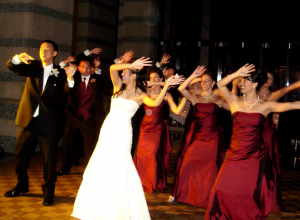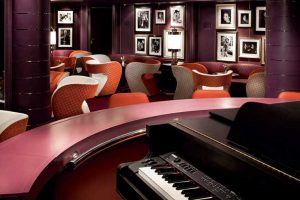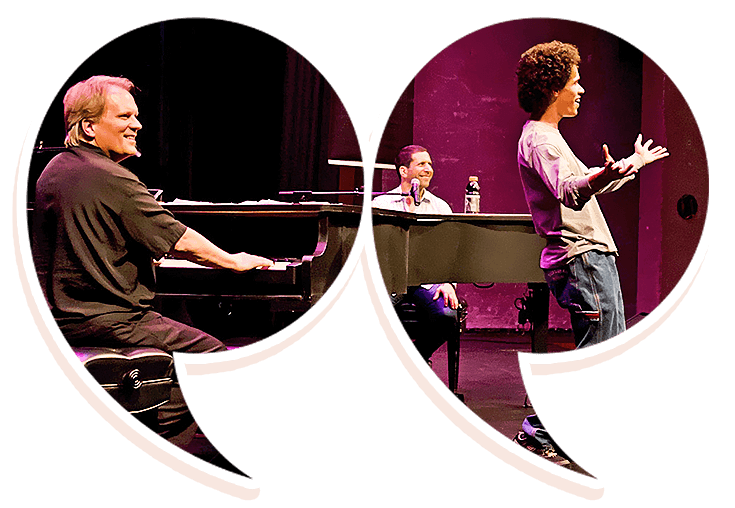When rock ‘n roll dueling pianos began in earnest in the late ’80’s, it quickly took the format of 4 pianists rotating through the stage every hour in teams of 2. Each team would play through request slips written down by the audience for an hour, and then the second team would relieve them, continuing to keep the energy at a fever pitch while the first team got a break. There were no drums, originally and certainly no other instruments on stage. Many comedy bits and audience call downs were created and perfected, including common ones such as the guy birthday call down, “Itsey Bitsey Tiney Weeny Little Pecker for a Wieny”, Joy to the World, with hand symbols, and Why Don’t We Get Drunk and Screw, rewritten as a girl’s birthday call down. A lot of the back and forth fights, or duels began to be developed such as North vs. South, Guys vs. Girls, Country vs. Rock, and of course duels involving college fight songs. It was an all-request show, where anyone could outbid a request they didn’t like to get that song stopped for their song.
By the time I began working as a Dueling Pianist, in 2007, all of these bits and tools had been handed down to me by veterans that had either had a hand in developing them, or had them handed down to them from even more experienced players. Each “generation” of dueling pianists improved upon the bits and tools, making them topical, rewriting them to better fit their audience. New bits were created and old ones were forgotten. Also, drums had become a common part of many dueling piano shows. At first it was the pianists who sat back at the drums at the top of every hour when both teams would be on stage for a couple of songs. Then later, many clubs hired a house drummer who was up onstage throughout the entire piano show. Songs like Toto’s “Africa”, Devil Went Down to Georgia, or Dobie Grey’s “Drift Away” were common for top of the hour changeover songs because of all of the great harmonies. Sometimes there might be a guitar or bass onstage that one of the pianists would pick up for one or two of the changeover songs (along with the drums), making the show a pickup band or what became known as a “band-a-long”. This 2 song band set became a good tool to reset the room, and bring in the second team with a fresh start.
As time passed, more and more bar owners realized that they could save money by eliminating one or two of the entertainers, bringing the show down to a 3 person or even 2 person show. While this reduced costs, many argued that it brought down the quality of the show, because the remaining performers had to work much harder, and be on stage longer, and the only way to do this was to preserve their energy and not give it all away. But this also allowed much smaller rooms to have access to dueling pianos, since it now cost less to put up a show, even if the show wasn’t as strong as it could be.
Another trend was driven by arguably the largest and perhaps most successful chain of dueling piano bars. They embraced a format where they brought more instruments on stage, and continually increased the duration of the “band-a-long” change over sets to the point where most of their shows are almost all band-a-long and the two pianos seem like a relic of a forgotten format. They also replaced most of the older players in lieu of younger, less experienced players that were led and trained by one or two experienced musicians. Music directors at their locations were instructed to eliminate the comedy bits and duels, and then to eliminate requests all together. They were told that they couldn’t play any music written before the 80’s, and to focus on whatever pop songs were on the charts that month. While this format is a far cry from how dueling pianos began, it seems to work for this chain, and it’s young clientele.
While this was happening, there were some venues, especially in the South that continue to remain true to the interactive and request-based format embraced and developed in the 80’s and 90’s. They continue to pick up new songs, but still do all the old favorites, making their appeal to a much broader age range.












